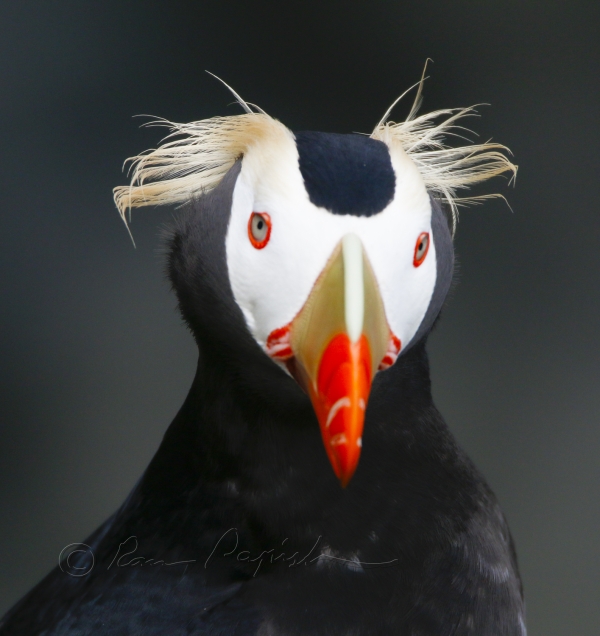
No matter what time of year one visits the Oregon coast, wildlife are plentiful and often easy to see. Cape Meares NWR features several trails that wind through a rare coastal stand of old-growth Sitka Spruce and Western Hemlock, allowing visitors an up-close look at an ecosystem millennia in the making. Binoculars or spotting scopes are highly recommended for those interested in watching the Peregrine Falcons on their aerie, or Gray Whales migrating past the cape. As always, don't forget the camera!
Seabirds are abundant in the summer at Cape Meares. Seabirds are gregarious, ocean-dwelling birds that live off the bounty of the sea, coming to land only to breed and raise their young. The rocks and islands scattered along the Pacific Coast provide ideal nesting habitat, and in the long days of summer they bustle with the raucous calls of tens of thousands of seabirds.
Seabirds spend most of their lives in the open ocean and have special adaptations to survive this cold and wet environment. Thick, waterproof feathers keep them warm; a special gland near their eye removes excess salt from their bodies; sharp, pointed beaks catch and hold slippery fish and other aquatic quarry; strong, pointed wings help some seabirds "fly" underwater; and webbed feet propel them efficiently towards their prey.
Spring is a time for mate-wooing, nest-building, and brood-rearing among the seabirds. Immense, raucous colonies of breeding pairs and their young—such as the Black Oystercatcher chick at left—crowd the offshore rocks and islands, vying for space and resources. Peregrine Falcons nest on Cape Meares from early April to July.
Fall brings rain and storms to the coast, but it also heralds the arrival of many of our winter migrants. Look for forerunners of wintering species such as scoters, goldeneyes, buffleheads, loons and Harlequin Ducks.

